Are hungry deer ruining your gardens? Nepeta to the rescue. Here are some choice Catmint varieties. All are beautiful selections of easy-care plants that deer avoid
For each of these varieties there are so many choices with new releases out all the time. There should be something for any style of garden. You can find ones that are large, with big blousy flowers to fill in a cottage garden or some that are dwarf for front of the border or for small gardens. There are ones with bright yellow foliage and others with different flower colors. I’ll share with you some of the best versions of Catmint.
Plant breeders have been hard at work creating some excellent new choices of Nepeta, commonly called ‘Catmint’. There has been a wave of new improved varieties of Catmint, many of which are a complete departure from older varieties. While the word ‘mint’ in the common name Catmint may strike fear, rest assured none of these Catmints are invasive like common mints. Kitties like the smell of catmint and can often be found curled up next to it, although they don’t get stoned like they do with catnip…Totally different plant. Deer, however detest the smell and are usually repulsed by it. Yay!
In my nursery, I often move my catmints in front of anything the deer are targeting to repel them. Catmint is drought tolerant and thrives on neglect, making it good choice for beginning gardeners, low-maintenance landscapes and water-wise borders. Since they are very drought tolerant and so easy to grow, I plant them in those difficult places beyond the reach of my hose. Catmints are a perfect choice near a forest interface where deer traverse daily or positioned in front of more tasty plants.
Here I’d like to share with you some awesome new varieties as well as some older, but beloved garden staples to look out for.
PHOTO CREDIT: WALTERS GARDENS
Nepeta ‘Cats Pajamas’
2021 Perennial of the year for its outstanding qualities. Cats Pajamas has a tidy ball-shaped habit with long, dark indigo blue flowers. A personal favorite… Unlike older varieties that only produce flowers at the top of the stems, this improved Catmint has blooms from the soil to the tips of the stems. Even when the flowers are past peak, the color of the rosy purple calyxes give your garden an additional splash of color. As an added bonus, the small, aromatic leaves strongly repel deer and rabbits. One of the best plants for pollinators. The short rounded stature makes it perfect at the front of the border or to line pathways. Long bloom-time, late spring through fall. When Nepeta’s foliage is crushed it releases an aroma into the air that tends to attract cats, which is why its common name is Catmint. Ht 14″ Perennial. Zone 3-8
Neteta ‘Purple Haze’
Looking for a bombproof, deer resistant, easy care plant for a low water garden? The new ‘Purple Haze’ has you covered. This is a new hybrid catmint with a completely different form developed at Terra Nova Nursery. Flowers look like a butterfly bush on a low spreading perennial. So versatile… it can solve many garden problems. With its low spreading form, try it as a groundcover or trailing off a sunny wall. Place in front of tastier morsels to repel deer. Excellent choice for front of the border as it blooms nonstop June- October with huge upcurved purple flower spikes. This bee and butterfly magnet provides nectar all summer. Evergreen silvery foliage even adds winter interest. Ht with flowers 7” spreading to 30”
Nepeta ‘Blue Prelude
The dawn of a new age for Catmint. All catmint varieties are treasured by gardeners for their easy-going nature, deer and rabbit resistance, drought tolerance and long life. They are highly attractive to bees and butterflies and provide a cozy place for your kitties to nap. Blue Prelude Catmint retains all these qualities in a completely different form. Blue Prelude is taller with huge blue flowers that are considerably larger than other varieties and offer a big display from late spring through summer. Happy in full sun to partial shade and well-drained soil. Perfect for a container or paired with other heat tolerant perennials in a bed. Trim back spent flowers to encourage more blooms. Ht 36” zone 5-9
Photo Credit: Walters Gardens
Nepeta ‘Walkers Low’
An older and tried and true landscape staple that I wouldn’t be without. Walkers Low, has a low arching habit and can soften the front of a border. One of the longest blooming perennials. Blooming spring-fall. Simply shear it back midsummer when the foliage may look a bit tired and you’ll quickly have another round of blooms to carry you and the pollinators into fall.
Nepeta ‘Pink Panther’
Now for a different color… As the name suggests, it’s a PINK Catmint. ‘Pink Panther’ has a compact bushy form sporting dense spikes of tubular clear pink flowers summer-fall. Hardy in zones 4-9 Only 12-20” tall
Nepeta ‘Chartreuse on the Loose’
Catmint, ‘Chartreuse on the Loose’ is an exciting new release for 2023 with purple flowers spring through fall that just pop against brilliant chartreuse foliage. This golden catmint has a cute bun shaped compact habit, perfect for front of the border or to line a pathway. Height 10’ x width 24” Hardy in zones 3-9
This post may contain Affiliate links. I only share products I like or use myself. If you click on those links I may get a small commission at no extra cost to you. It helps keep this blog going. Full Disclosure Here:
Care, Planting and Pruning of Catmint:
Planting Catmint: It’s always good to try and group plants with similar growing conditions. Nepetas like full sun, but can grow in part shade. Most need at least 6 hrs of sun per day to flower well. They need soil that drains well, so if you have heavy clay soil, be sure to amend with compost or mix in a handful of Turface to improve drainage. For more garden impact, try groupings of 3,6 or 9. When choosing placement, pay attention to overall size and habit. For instance, Cat’s Pajamas has a tidy, compact rounded form and looks wonderful lining a more formal path, whereas ‘Blue Haze’ has a more informal look and acts more like a sprawling groundcover or spiller over a wall. The taller ‘Blue Prelude’ is best suited as a grouping and tucked back into a garden bed alongside other mid-sized perennials.
Catmint is drought tolerant and thrives on neglect, making it good for beginning gardeners, low-maintenance landscapes and water-wise borders. Hardy in USDA zones 3-8, plants are virtually pest and disease-free, while the mint-like scent repels deer and rabbits.
Care: Most varieties require nothing more than an occasional cutback in summer to rejuvenate tired looking foliage and encourage rebloom. To do this simply shear the whole plant back by half in early summer. Catmints are deciduous in most climates, but may retain foliage in warmer zones. In colder zones, clean up dead or dying foliage in fall. In warmer climates cut off any dead or scruffy foliage from the prior year. This can be done in late winter- very early spring, before it pushes new growth. Catmints are virtually pest and disease-free.
Catmint is drought tolerant and thrives on neglect, however, they look best when given some supplemental water during long hot dry spells. They also can handle regular irrigation as long as the soil doesn’t stay soggy and boggy. To amend clay or poorly draining soil try Turface.
.
Is Catmint Edible or Medicinal?
The leaves and flowers have a minty aroma and taste. Catmints can be used in herbal teas, added fresh to salads or cooked into any dish that you want to add a pop of minty flavor to. Chefs sometimes utilize it in sauce and soup. Many of the uses are similar to the uses of Catnip (Nepeta cataria) although Catmint ( Nepeta fassenii) doesn’t contain exactly the same compounds. All Nepetas produce nepetalactone, which is the compound that causes the well-known stoned reaction in cats but Nepeta fassenii (Catmint) contains much less of it
.
Health Benefits of Catmint
Catmint is rich in Vitamins and minerals:
Vitamins: Like many in the mint family, catmint is an excellent source of vit. C and vitamins A and K.
• Minerals: Catmint is a good source of iron, manganese, and potassium.
• Insomnia and anxiety: Gently sedative. You can use catmint tea as a sleep aid or as a tea to treat anxiety.
• Fever: Catmint can produce perspiration and can be useful to naturally lower body temperature if it is excessively high.
• Settle an Upset Tummy: Catmint is useful to treat various digestive problems including tummy ache and flatulence.
Catmint is considered a deer-resistant plant, meaning that deer are less likely to browse on it compared to other plants in the landscape. While no plant is completely deer-proof, catmint is an excellent option for gardeners looking to create a deer-resistant landscape.
The scent of the foliage repels deer, making it a popular choice for gardeners looking to deter deer from their gardens. While catmint is considered deer-resistant, it’s important to note that deer preferences can vary depending on the time of year, food availability, and other factors. Gardeners should still take precautions, such as using deer repellent sprays or installing physical barriers, to ensure that their landscapes are protected from deer damage.
Overall, catmint can be a good choice for gardeners looking for a deer-resistant plant for their landscape. Just be sure to take additional measures to protect your garden from deer, as even deer-resistant plants can be attractive to these browsing animals under certain conditions.
To create a deer resistant garden you don’t need to only select plants they don’t like. With careful placement and an occasional spray you can include some plants that hungry deer target. While the deer will most likely leave your Nepetas untouched, you may still need to spray other plants they find tasty. Here are some sprays that repel the deer:
I hope this inspires you to welcome some Catmint varieties into your garden.
For plants that the deer are targeting try Deer Scram Professional
It’s a granular product which makes application easier than products that need to be mixed and sprayed.
Safer Critter Ridder Deer and Rabbit Repellent Concentrate
Safer Critter Ridder Deer and Rabbit Repellent RTU
Turface MVP for Cactus & Succulents, Garden House Plant, Bonsai Tree Soil Mix and Top Dressing – Small Grain
Author: Stephanie Beach


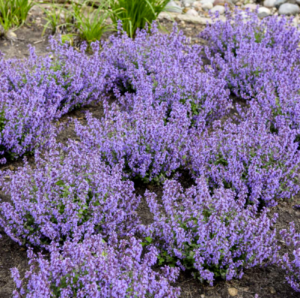
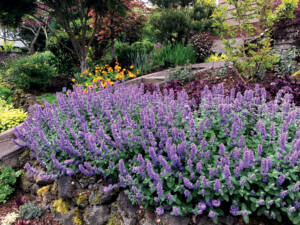
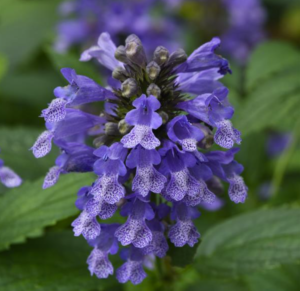
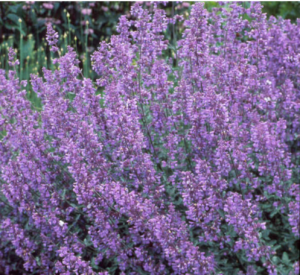
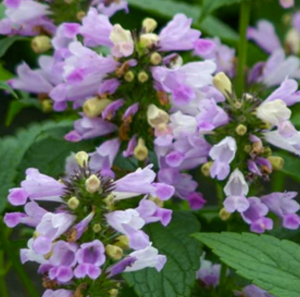
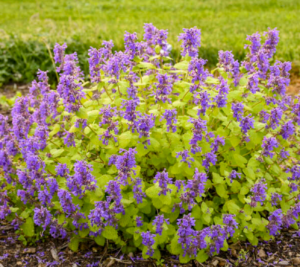
2 Comments
Excellent article. Wish we would have known this in Sequim when the deer loved eating our flowers.
Thank you so much for your kind words.
It’s fun discovering plants they tend to turn their noses up at. It opens up so many possibilities. Hopefully the article helps someone create a lush garden despite the Gangs of Cute Furry Thugs!
I’m always amazed at the out of control population of deer and elk on the Olympic Peninsula.
Comments are closed.